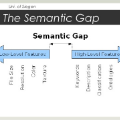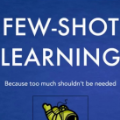Despite the remarkable success of existing methods for few-shot segmentation, there remain two crucial challenges. First, the feature learning for novel classes is suppressed during the training on base classes in that the novel classes are always treated as background. Thus, the semantics of novel classes are not well learned. Second, most of existing methods fail to consider the underlying semantic gap between the support and the query resulting from the representative bias by the scarce support samples. To circumvent these two challenges, we propose to activate the discriminability of novel classes explicitly in both the feature encoding stage and the prediction stage for segmentation. In the feature encoding stage, we design the Semantic-Preserving Feature Learning module (SPFL) to first exploit and then retain the latent semantics contained in the whole input image, especially those in the background that belong to novel classes. In the prediction stage for segmentation, we learn an Self-Refined Online Foreground-Background classifier (SROFB), which is able to refine itself using the high-confidence pixels of query image to facilitate its adaptation to the query image and bridge the support-query semantic gap. Extensive experiments on PASCAL-5$^i$ and COCO-20$^i$ datasets demonstrates the advantages of these two novel designs both quantitatively and qualitatively.
翻译:尽管现有的少截分法取得了显著的成功,但仍存在两个关键的挑战。首先,在基础班培训阶段,小类的特色学习被抑制,因为小类总是被当作背景。因此,小类的语义学没有很好地学习。第二,大多数现有方法没有考虑到支持与支持样本稀少代表偏差引起的问题之间潜在的语义差距。为了绕过这两个挑战,我们提议在特征编码阶段和分分解预测阶段,明确启动新类的可分歧性。在特征编码阶段,我们设计语义保留特写学习模块(SPFL),以便首先利用并保留整个投入图像中所包含的潜在语义学,特别是属于新类的背景中的语义学。在分解的预测阶段,我们学习了自定义的在线地层-地表层分类器(SROFOFB),它能够利用高可信度的查询图像来改进自己。在调适其查询$的图像和将支持-que$的QISA-5质量数据测试中的支持-queral 以及两个新的C-C-C-C-C-C-II-C-C-C-Tal-Tal-C-Tal-Tal-Tal-Tal-Tal-C-C-C-C-C-C-C-C-C-Tal-C-C-C-C-C-C-Tal-T-T-T-T-T-T-C-C-C-T-T-C-C-C-C-C-C-C-C-C-C-C-C-C-C-G-G-C-C-C-G-G-G-G-G-G-G-G-T-T-T-T-T-T-T-T-T-T-T-T-T-T-T-T-T-T-T-T-T-T-T-T-C-C-C-C-C-C-C-C-C-C-C-C-C-T-T-T-T-T-T-T-T-T-T-T-T-T-T-T-T-T-C-C-C-C-C-C-T-T-T-T-T-T



